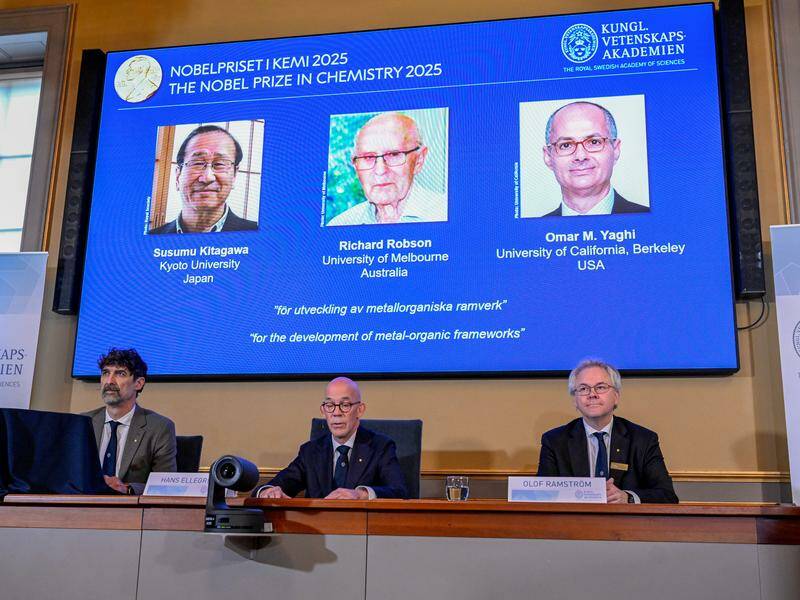
A professor from the University of Melbourne, Australia, has been awarded the prestigious Nobel Prize in Chemistry, alongside two other international scientists. They received the accolade for their groundbreaking work in developing a new form of molecular architecture, which has the potential to address significant global challenges such as climate change and water scarcity.
Richard Robson, the Melbourne professor, collaborated with Susumu Kitagawa from Kyoto University in Japan and Omar Yaghi from the University of California, Berkeley, United States. Together, they designed molecular structures featuring large spaces that facilitate the flow of gases and chemicals. These innovations could be pivotal in harvesting water from desert air, capturing carbon dioxide, and storing harmful gases.
Innovative Materials with Vast Potential
The Royal Swedish Academy of Sciences highlighted that some of these newly developed materials possess an exceptionally large surface area. For instance, a porous material comparable in size to a small sugar cube could have a surface area equivalent to that of a large football pitch. Olof Ramstrom, a member of the Nobel Committee for Chemistry, remarked, “A small amount of such material can be almost like Hermione’s handbag in Harry Potter. It can store huge amounts of gas in a tiny volume.”
The Nobel Prize, which has been awarded for over a century, carries a monetary reward of 11 million Swedish crowns (approximately $A1.8 million). This accolade is often regarded as the most prestigious in the scientific community.
During a media conference, Kitagawa expressed his gratitude for the recognition, stating, “My dream is to capture air and separate air to—for instance, in CO2 or oxygen or water or something—and convert this to useful materials using renewable energy.” The Nobel Committee noted that the development of metal-organic frameworks by these laureates offers new avenues for chemists to tackle pressing societal challenges.
A Tradition of Excellence in Chemistry
The announcement of the chemistry prize follows the earlier announcements of the Nobel Prizes in Medicine and Physics this week. Established by the will of Swedish inventor and businessman Alfred Nobel, these awards have been celebrating achievements in science, literature, and peace since 1901, with some interruptions during the world wars.
While sometimes overshadowed by more prominent laureates in physics, literature, and peace, the chemistry awards have acknowledged numerous influential discoveries, including nuclear fission and DNA sequencing techniques. This year, the chemistry prize also recognized US scientists David Baker and John Jumper, along with Demis Hassabis from Britain, for their achievements in decoding protein structures and creating new proteins, which could lead to significant advancements in drug development.
The Nobel announcements will continue with the literature prize on October 10, the Nobel Peace Prize on October 11, and the economics prize on October 14. The awards ceremony is scheduled for December 10, the anniversary of Nobel’s death.






